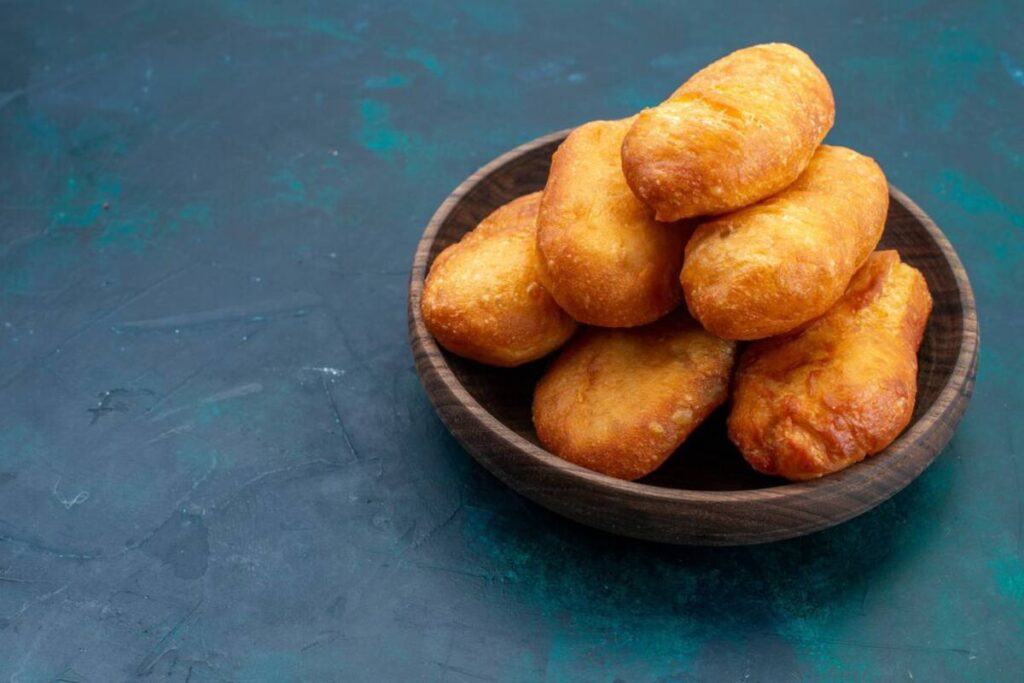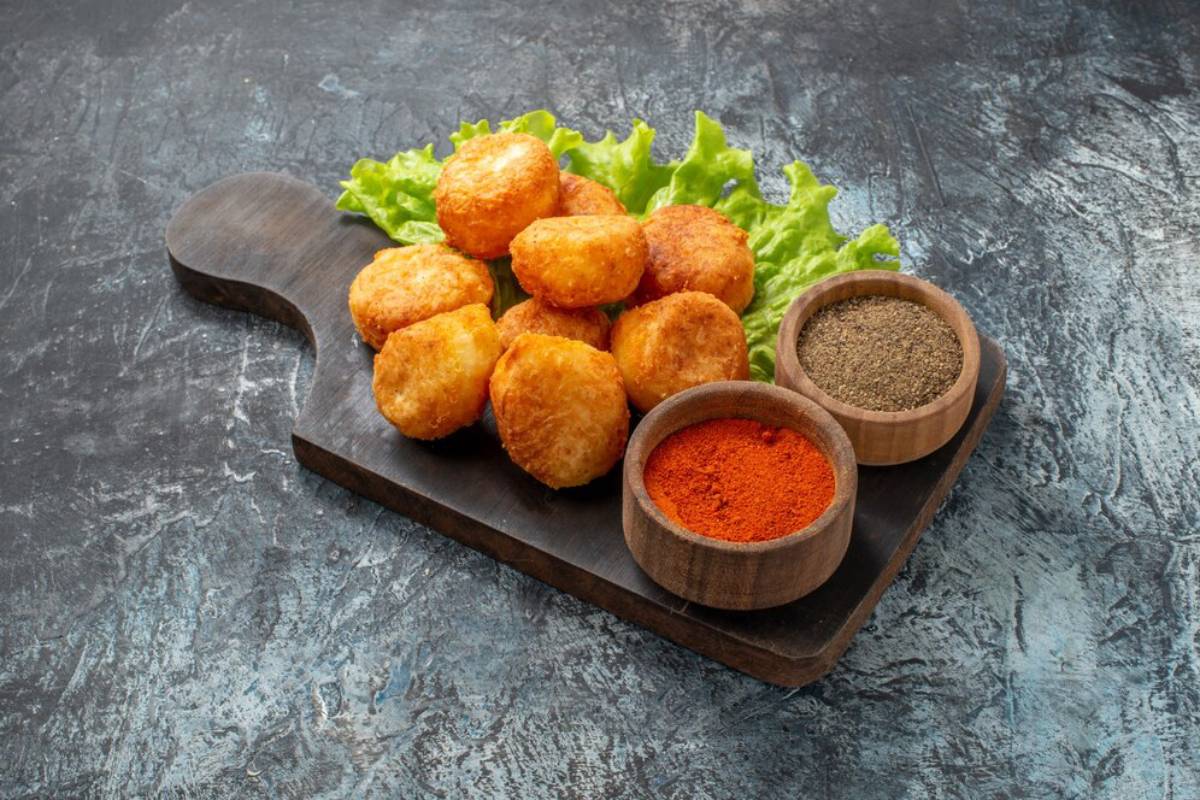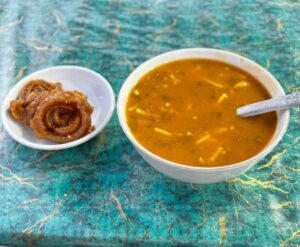The Food & Recipes Blog

Nigerian Puff-Puff: A Sweet Street Snack
The sweet scent of grilled food and sizzling sounds frequently animate vibrant street corners across Africa. The continent is home to a tapestry of quick, flavour-packed bites from roasted corn to spicy meat skewers. Puff puff Nigeria is one of these, a golden, fluffy and slightly sweet ball of dough that transports many West Africans to their childhood.
Whether you’re enjoying it for the first time or finding your way back to a love for it, puff-puff is a delicious peek into African culinary tradition. In this blog, we’ll examine the roots of this fried dough snack from Africa, its cultural significance, how to make it at home, and what has made it one of the must-try sweet street foods in the world.
What Is Puff-Puff?
A Simple Snack with Global Appeal
Puff-puff is a deep-fried dough ball typically made with flour, sugar, yeast, water, and a pinch of salt. Some recipes incorporate nutmeg or vanilla for an aromatic twist. The result? A soft-centred, golden-brown delight that can be enjoyed on its own or with various accompaniments—from spicy dips to sweet syrups.
Despite its simplicity, puff-puff has universal appeal. Variations exist across cultures—Ghana has bofrot, Congo has mikate, and Caribbean cuisines offer similar treats. Yet, puff puff Nigeria is uniquely positioned in West African culinary identity.
The Cultural Significance of Puff-Puff in Nigeria
More Than Just a Snack
In Nigeria, puff-puff is more than a quick bite; it’s a cultural marker. Often served at parties, weddings, and festive gatherings, puff-puff symbolises community and celebration.
Why it’s loved:
- Affordability: Ingredients are inexpensive and accessible.
- Versatility: Puff-puff can be sweet or savoury, spiced up with pepper or dusted with sugar.
- Convenience: Easy to prepare in bulk, making it ideal for crowds.
- Nostalgia: For many Nigerians, puff-puff is tied to childhood memories and home-cooked meals.
It’s also a source of income for many local vendors who rely on selling it as part of their street food offerings.
Puff-Puff Ingredients and Variations
The Basic Ingredients
To prepare classic Nigerian puff-puff, you’ll need:
- 2 cups all-purpose flour
- 2 teaspoons active dry yeast
- ½ cup sugar (adjust to taste)
- ¼ teaspoon salt
- 1–1¼ cups lukewarm water
- Oil for deep frying
- Optional: Nutmeg, vanilla essence, or ground cinnamon
Instructions in brief:
- Combine flour, sugar, salt, and optional spices in a bowl.
- Dissolve yeast in lukewarm water and add to the mixture.
- Mix into a smooth, stretchy batter and let it rise for 45 minutes to 1 hour.
- Heat oil, scoop batter with a spoon or hand, and fry until golden brown.
- Drain on paper towels and serve warm.
Popular Twists on the Traditional Recipe
While the basic recipe remains unchanged, regional and personal preferences lead to creative adaptations:

- Spicy puff-puff: Includes chopped chillies or pepper powder in the batter.
- Coconut puff-puff: Grated coconut or coconut milk added for a tropical flair.
- Stuffed puff-puff: Filled with chocolate, jam, or minced meat for a modern spin.
- Savoury versions: Include spring onions, cheese, or curry powder.
Nutritional Insight: Indulgence in Moderation
While undeniably delicious, puff-puff is a deep-fried snack and should be enjoyed in moderation. A standard serving contains roughly 150–200 calories, depending on size and preparation method.
Tips for a healthier version:
- Opt for air frying or shallow frying.
- Use whole wheat flour for added fibre.
- Control portion sizes.
- Reduce sugar for a less sweet taste.
How Puff-Puff Fits into the African Street Food Landscape
Street food in Africa is more than sustenance—a socio-economic ecosystem. Puff-puff plays a key role within this framework, both nutritionally and culturally.
According to a 2022 report by the African Development Bank:
Street food contributes significantly to urban food security and informal employment across West Africa.
Many women vendors sell puff-puff in makeshift stalls or mobile carts, often in bustling urban centres. Puff-puff offers a reliable income stream for these entrepreneurs, especially when scaled into larger food businesses or catering services.
Puff-Puff Across the Diaspora
The global Nigerian and African diaspora have introduced puff-puff to international food scenes, particularly in the UK, Canada, and the US. It’s increasingly common to find puff-puff on the menus of African restaurants, food trucks, and fusion cafes.
Trending ways puff-puff is being reimagined globally:

- Vegan options using plant-based milk and egg alternatives.
- Gourmet versions are served with dips like salted caramel or spicy aioli.
- Dessert platters featuring puff-puff with fruits and sauces.
This evolution underscores puff-puff’s adaptability and enduring charm.
How to Make Perfect Puff-Puff at Home
Common Mistakes to Avoid
To master puff-puff, here are some helpful dos and don’ts:
Dos:
- Let the dough rise fully; this affects fluffiness.
- Use lukewarm water—not hot—for yeast activation.
- Fry in batches to prevent overcrowding the pan.
Don’ts:
- Don’t overmix the batter after rising; it can deflate the air pockets.
- Don’t fry in too hot oil—it will brown the outside while leaving the inside raw.
Handy Tips for Beginners
- Use a small ice cream scoop for consistent sizing.
- Sprinkle with icing sugar for an aesthetic touch.
- Pair with zobo (hibiscus drink) or ginger tea for an authentic Nigerian experience.
Real-Life Voices: Why People Love Puff-Puff
We reached out to several Nigerians living abroad to share their connection with puff-puff:
Amaka, 34, Manchester: “Making puff-puff on weekends brings a sense of home into my kitchen. It’s more than food—it’s comfort.”
Chinedu, 29, Toronto: “I introduced puff-puff to my Canadian friends—they loved it. Now they request it every holiday!”
These anecdotes illustrate how food, especially street food like puff-puff, forms a bridge between cultures and continents.
A Doughy Delight Worth Trying
Puff-puff is far more than a sweet street food — it’s a cultural emblem, a means of livelihood for many, and a beloved snack spanning generations. Whether nibbling it on a Lagos street corner or tasting a homemade version in London, puff-puff connects people to tradition, flavour and joy.
Its versatility, simplicity and deep cultural roots make it an African culinary treasure worthy of celebration. So the next time you crave warm, fluffy, nostalgic food, try puff-puff.
Have you ever had puff-puffs? In the comments, let us know your favorite variation on this classic treat! If you’ve never tried it, make our recipe and tag us in your creation—we want to see your version of this American classic.









